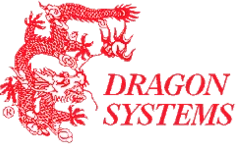Talking to Computers, and the Vocola Project
I built Vocola to help control computers by voice. Why?
Speaking to devices is common these days, whether it’s dictating a smartphone message or asking a “virtual assistant” to play a song. But when working on a computer most people still rely on a keyboard and mouse or trackpad.
Can you imagine controlling a computer entirely hands-free, using only your voice?
You might do OK dictating an email, but what about your hundreds of other interactions — clicking menus, scrolling web pages, renaming files, editing text, making spreadsheets, ... ?
I faced this situation in 1998 when a bad repetitive strain injury (RSI) brought pain with every keystroke. Most injuries get better on their own but I slowly realized this was different, as none of the numerous therapies I tried made a difference.
 How could I continue working as a software developer without being able to type?
How could I continue working as a software developer without being able to type?
Had it been a few years earlier I might well have needed a new line of work. But the world’s first good speech recognition software was recently available—Dragon NaturallySpeaking—and it allowed creating voice commands.
With a coworker’s help I created dozens of simple commands, and used those to create dozens more. Luckily Windows has a keyboard shortcut for almost everything, so simple voice commands go a long way—like saying “Copy That” to send the keystroke “Ctrl+c”.
But doing my job required hundreds of voice commands, and managing them in Dragon was extremely clunky. So evenings and weekends (unmarried, no kids) I built Vocola, a voice command language where you can write
Copy That = {Ctrl+c};
and it just works.
 There’s lots more,
and people started using it once I polished it up.
Mostly other injured software developers, but also disabled people, video gamers, and others who found that, as one user said,
“I'm starting to realize that using voice can be more powerful than using hands.”
There’s lots more,
and people started using it once I polished it up.
Mostly other injured software developers, but also disabled people, video gamers, and others who found that, as one user said,
“I'm starting to realize that using voice can be more powerful than using hands.”
And it’s true—once past the significant hump of creating commands and talking to your computer, you discover countless situations where speaking is more efficient than the keyboard and mouse. It’s so profound that people start hatching ideas to bring those amazing effficiencies to able-bodied people. But in my experience the learning curve is so steep that people only climb it out of dire necessity.
A more reliable version?
Being dependent on Vocola for my livelihood made me nervous, because it relies on a (great but unsupported) back-door into Dragon called NatLink. Over time as Dragon was sold to a parade of different companies, every release brought the nail-biting question “Does NatLink still work?” And often the answer has been “Well, partly …” Fortunately its value has motivated heroic developers to find workarounds.
 But when Microsoft released Windows Speech Recognition (WSR) in 2007 I decided to bet on a solid Microsoft product over an unreliable Dragon back door,
and built Vocola 3 for WSR.
As things turned out though Microsoft stopped developing WSR, and it’s not quite as good as Dragon.
But when Microsoft released Windows Speech Recognition (WSR) in 2007 I decided to bet on a solid Microsoft product over an unreliable Dragon back door,
and built Vocola 3 for WSR.
As things turned out though Microsoft stopped developing WSR, and it’s not quite as good as Dragon.
Most Vocola users have stuck with Vocola 2 (beautifully supported and enhanced by Mark Lillibridge), and NatLink is still working!
Epilogue
Unfortunately, while many people with a typing injury recover in a few months, mine has persisted. But with my thousand-plus voice commands I’ve been able to continue working effectively as a software developer.
One doctor I saw said "With constant vigilance you can get a little better every year" and at this writing (2023) I’m a lot better. I can play fiddle as much as I want, and can type when necessary. But voice recognition software will likely be a permanent companion, as regular typing always brings symptoms after a few days.
Even so, creating Vocola has been a great silver lining!

